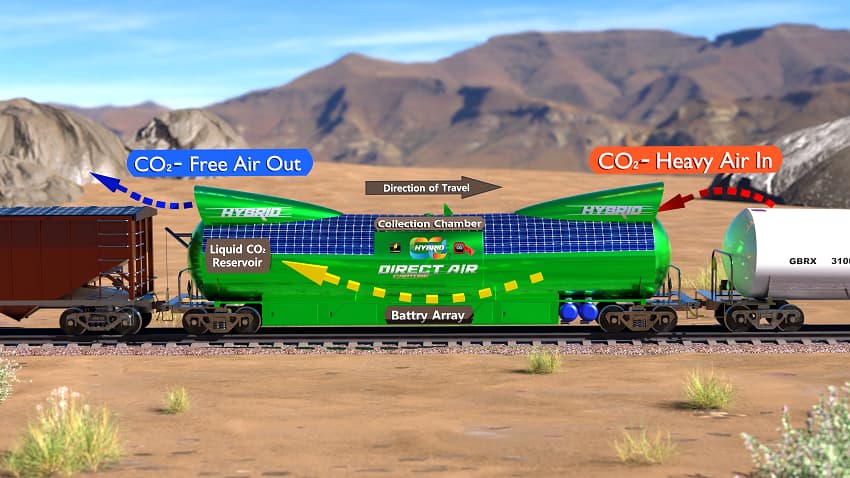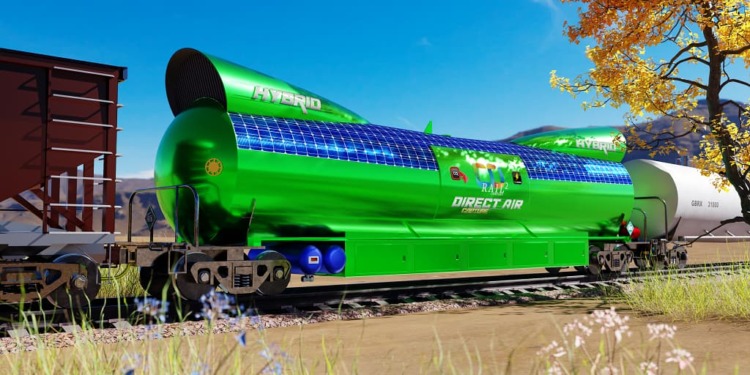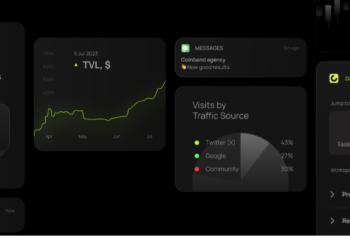What if we could use our rail systems to power and move around DAC – direct air capture – machines and collect CO2? This is what US startup CO2Rail is planning to do and could be the key to reducing global emissions.
There are two key components that could help understand better CO2Rail idea:
On one side DAC is a crucial technology for removing carbon dioxide from the atmosphere and helping mitigate global climate change. The IPCC has reported that deep net-negative CO2 mitigation is almost certainly necessary to stay within 2°C of warming.
Stationary DAC machines however require large areas of land to be built and even more, to construct renewable sources of energy to power them, they are land intensive – obtaining the necessary permits, conducting surveys, meeting zoning requirements, and achieving community acceptance is very complicated – and they are also very expensive.
On the other side, trains when pumping the brakes generate a lot of energy and that normally is dissipated in the form of heat and discharged out of the top of the locomotive during every braking maneuver. And that is not a small amount of energy: “on average, each complete braking maneuver generates enough energy to power 20 average homes for an entire day” Says Eric Bachman, CTO at CO2Rail, “
If you multiply this by every stop or deceleration for nearly every train in the world and you have about 105 times more energy than the Hoover Dam produces within that same period.
What if it would be possible to harness that energy and use it for carbon capture purposes? This is exactly what CO2Rail team has been thinking for years.
CO2Rail, Rail-based DAC
The CO2Rail team is made up of people from the University of Toronto, MIT, Princeton, and the University of Sheffield. They aim to design a DAC technology that uses less energy, less land, and at a cost that the world could afford. And this is achieved by operating DAC equipment within special rail cars placed with already running trains in regular service and taking advantage of many synergies that integration within the global rail network would provide.
These DAC rail cars work by using large intakes that extend up into the slipstream of the moving train to move ambient air into the large cylindrical CO2 collection chamber and eliminate the need for energy-intensive fan systems that are necessary with stationary DAC operations. The air then moves through a chemical process that separates the CO2 from the air and the carbon dioxide-free air then travels out of the back or underside of the car and returns to the atmosphere.
RELATED ARTICLES: Direct Air Capture: Resource Considerations and Costs for Carbon Removal | The Profitable Equation of Carbon Removal | Large-Scale Carbon Capture is Finally Underway | 6 Ways to Remove Carbon Pollution From the Sky |
After a sufficient amount has been captured, the chamber is closed and the harvested CO2 is collected, concentrated, and stored in a liquid reservoir until it can be emptied from the train at crew change or fueling stops into normal CO2 rail tank cars for direct transportation into the circular carbon economy as a value-added feedstock or to nearby geological sequestration sites.
Each of these processes is powered exclusively by onboard generated, sustainable energy sources that require no external energy input or off-duty charging cycles.

The team says that each direct air capture car can harvest about 6,000 metric tons of carbon dioxide from the air per year and this figure could actually increase as the technology develops. Moreover, since trains are capable of hosting multiple CO2Rail cars, each train will harvest a corresponding multiple of CO2 tonnage.
With its sustainable power requirements exclusively supplied by train-generated sources, savings of 30 – 40% per tonne of harvested CO2 can be realized from energy inputs alone. This brings down costs to less than $50 per tonne of CO2 harvested, making the technology not only commercially viable but commercially attractive.
Another reason why this technology is such an attractive climate solution is that much of the required infrastructure is already in place and the energy is there, just waiting to be utilized.
Especially now, when several countries of the world are pushing to increase the use of railway services, we could get to a point where thanks to CO2Rail technology emissions could be reduced directly by CO2Rail DAC machines attached to trains, and indirectly by people choosing to commute or transport their goods by train.
“Imagine stepping onto a train each morning, seeing the CO2Rail cars attached, and knowing that your commute to work each day is actually helping to mitigate climate change,” says Bachman from CO2Rail.
Hopefully, we will see this happening in the near future.
Editor’s Note: The opinions expressed here by Impakter.com columnists are their own, not those of Impakter.com –In the Featured Photo: Rendering of the DAC machine by CO2Rail. Photo credit: CO2Rail.











